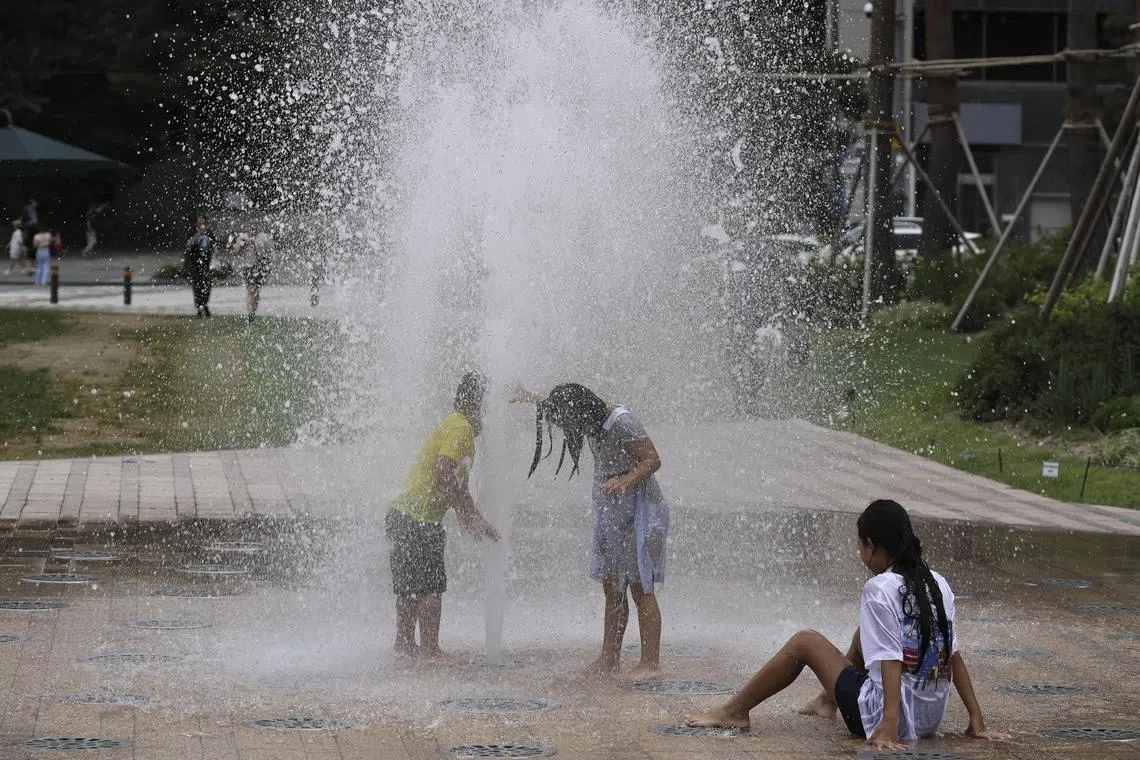Seoul breaks century-old weather record with 26th ‘tropical night’
Sign up now: Get ST's newsletters delivered to your inbox

Overnight temperatures in Seoul have sizzled above 25 deg C for 26 days in a row, marking the longest streak since modern weather observation began in 1907 for the city.
PHOTO: EPA-EFE
Follow topic:
SEOUL – South Korean capital Seoul broke a century-old weather record with the 26th so-called “tropical night” in a row, according to official data released on Aug 16.
“The cold air is not coming down from the north and as we are affected by the warmer side of the south-west, the temperature is continuously recording around 25 deg C or above, said Seoul’s Meteorology Forecast Division director Youn Ki-han.
A tropical night is when the lowest temperature remains above 25 deg C between 6.01pm the night before and 9am the next day.
Much of the world is enduring a summer of extreme heat, with United Nations Secretary-General Antonio Guterres warning in July of an “extreme heat epidemic” and calling for action to limit the impact of heatwaves intensified by climate change.
Overnight temperatures in Seoul have sizzled above 25 deg C for 26 days in a row, officials said, marking the longest streak since modern weather observation began in 1907 for the city.
The record ties a streak set in 2018, but the weather agency counts the most recent one as the benchmark.
The intense heat in Seoul is expected to continue, according to Seoul’s Office of Meteorology, setting a new record every day until next week.
Officials say such a long streak is unusual.
“Usually around this time, the temperature drops in the morning and evening as the cold air comes down from the north-west, and the North Pacific high-pressure contracts. But currently, we aren’t seeing any signs of that yet,” said director Youn.
Busan, South Korea’s second-largest city, meanwhile, logged its 22nd consecutive tropical night – its longest streak since records began in 1904.
‘Bound to get worse’
According to the International Institute for Environment and Development (IIED), the number of days with temperatures reaching 35 deg C in the world’s largest capital cities has surged by 52 per cent over the past 30 years.
In 2018 alone, Seoul experienced 21 days with temperatures over 35 deg C – more than the previous 10 years combined.
“In just one generation, there has been an alarming increase,” said Dr Tucker Landesman, a senior researcher at IIED.
Climate activists in South Korea are calling for more government action.
“There is no chance that this will get better, and it is bound to get worse,” Mr Youn Se-jong, an environmental lawyer, told AFP.
“Strengthening the goal of reducing greenhouse gas emissions should be the priority.”
South Korea currently has the lowest proportion of renewable energy in its power mix among all countries in the Organisation for Economic Cooperation and Development, and is the Group of 20’s second-highest carbon emitter from coal per capita, according to energy think-tank Ember.
North Korea is also sweltering under a heatwave and issued a warning earlier this week, with central areas including Pyongyang affected.
“Severe heat of 33 to 37 (deg C) is foreseen in some areas,” said Mr Kim Kwang Hyok, an official at the North’s State Hydro-Meteorological Administration. AFP

